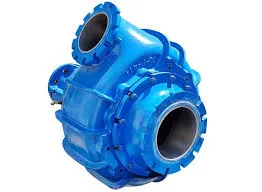Hebrew
- Afrikaans
- Albanian
- Amharic
- Arabic
- Armenian
- Azerbaijani
- Basque
- Belarusian
- Bengali
- Bosnian
- Bulgarian
- Catalan
- Cebuano
- Corsican
- Croatian
- Czech
- Danish
- Dutch
- English
- Esperanto
- Estonian
- Finnish
- French
- Frisian
- Galician
- Georgian
- German
- Greek
- Gujarati
- Haitian Creole
- hausa
- hawaiian
- Hebrew
- Hindi
- Miao
- Hungarian
- Icelandic
- igbo
- Indonesian
- irish
- Italian
- Japanese
- Javanese
- Kannada
- kazakh
- Khmer
- Rwandese
- Korean
- Kurdish
- Kyrgyz
- Lao
- Latin
- Latvian
- Lithuanian
- Luxembourgish
- Macedonian
- Malgashi
- Malay
- Malayalam
- Maltese
- Maori
- Marathi
- Mongolian
- Myanmar
- Nepali
- Norwegian
- Norwegian
- Occitan
- Pashto
- Persian
- Polish
- Portuguese
- Punjabi
- Romanian
- Russian
- Samoan
- Scottish Gaelic
- Serbian
- Sesotho
- Shona
- Sindhi
- Sinhala
- Slovak
- Slovenian
- Somali
- Spanish
- Sundanese
- Swahili
- Swedish
- Tagalog
- Tajik
- Tamil
- Tatar
- Telugu
- Thai
- Turkish
- Turkmen
- Ukrainian
- Urdu
- Uighur
- Uzbek
- Vietnamese
- Welsh
- Bantu
- Yiddish
- Yoruba
- Zulu
Telephone: +86 13120555503
Email: frank@cypump.com
אוג . 14, 2024 00:56 Back to list
Exploring the Efficiency and Applications of Axial Pumps in Modern Industrial Systems
Understanding Axial Pumps Technology, Applications, and Benefits
Axial pumps, also known as axial flow pumps, are critical components in various industrial applications where the efficient movement of fluids is necessary. Unlike centrifugal pumps, which move liquids by converting rotational energy into hydrodynamic energy, axial pumps operate by utilizing a propeller-like rotor to direct fluid along the axis of the pump. This design allows for high flow rates and low-pressure heads, making axial pumps suitable for several applications.
Basic Operating Principles
The fundamental operation of an axial pump revolves around the rotor and stator configuration. The rotor is attached to a motor, which drives it to spin. As the rotor spins, it creates a low-pressure area in front of it, causing the liquid to be drawn into the pump. The liquid then flows along the shaft and is expelled out through the discharge outlet. This mechanism is efficient for transferring large volumes of fluids over relatively short distances.
The design of axial pumps typically includes a series of blades that are optimized to influence the flow direction of the liquid. The angle and pitch of these blades are crucial, as they determine the flow rate and efficiency of the pump. Axial pumps generally have higher efficiencies than centrifugal pumps when it comes to transferring fluid at low head conditions.
Applications
Axial pumps are widely used in various industries due to their unique properties. In agricultural applications, they are commonly found in irrigation systems, pumping water from rivers or lakes to fields. In the marine industry, axial pumps are used for ballast water management, helping to maintain the balance and stability of ships.
In the chemical processing sector, axial pumps serve to transfer corrosive liquids and other volatile substances with minimal shear, helping to preserve the integrity of the liquid
. Moreover, they are utilized in municipal water treatment facilities for their ability to handle large volumes of water efficiently, especially during peak usage periods.axial pumps

Additionally, the oil and gas industry employs axial pumps in offshore drilling operations. They play a vital role in transporting crude oil and other hydrocarbons from the seabed to processing facilities.
Benefits of Axial Pumps
The advantages of axial pumps make them a preferred choice in many scenarios. One of the main benefits is their ability to handle large flow rates at low pressure, which can translate to energy savings and reduced operational costs. Since they are designed to operate efficiently in conditions where high pressure is not a primary requirement, they typically consume less power than their centrifugal counterparts.
Furthermore, axial pumps are easier to maintain. Their simple construction involves fewer parts compared to other pump types, meaning that there are fewer points of potential failure. This simplicity not only allows for quicker repairs but also reduces downtime in industrial operations.
Another significant advantage is their versatility; axial pumps can be designed to accommodate various fluids, including clean water, sewage, chemicals, and slurries. This characteristic makes them indispensable in diverse sectors, ranging from agriculture to wastewater treatment.
Conclusion
In conclusion, axial pumps play a vital role in modern fluid transport systems across multiple industries. Their unique design, operational efficiency, and ability to handle large volumes of liquid with minimal energy consumption highlight their importance. As industries continue to evolve, the demand for efficient and reliable fluid handling solutions will ensure that axial pumps remain relevant and widely used instrumental devices in the pump industry. Understanding their mechanics and applications can help businesses optimize their processes and achieve greater efficiency in their operations.
-
pipeline pump - Chi Yuan Pumps Co., LTD.|High Efficiency&Low Noise
NewsJul.31,2025
-
ISG Series Vertical Pipeline Pump - Chi Yuan Pumps Co., LTD.|High Efficiency, Energy Saving, Low Noise
NewsJul.30,2025
-
ISG Series Vertical Pipeline Pump- Chi Yuan Pumps|High Efficiency&Low Noise
NewsJul.30,2025
-
ISG Series Vertical Pipeline Pump-Chi Yuan Pumps Co., LTD.|High Efficiency&Energy Conservation
NewsJul.30,2025
-
ISG Series Vertical Pipeline Pump - Chi Yuan Pumps Co., LTD.|Advanced Hydraulic Design&Energy-Efficient Solutions
NewsJul.30,2025
-
ISG Series Vertical Pipeline Pump - Chi Yuan Pumps Co., LTD.
NewsJul.30,2025










